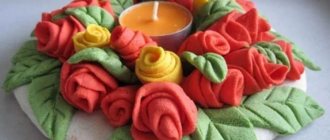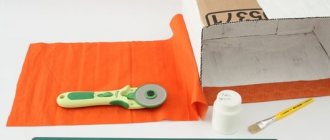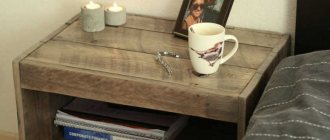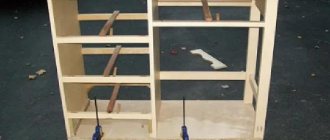Baskets began to be made in ancient times, when the first weaving techniques from scrap materials (mainly wicker) appeared. They were supplemented with handles or special straps for carrying on the back. Initially, the containers replaced modern bags and bags, in which food or small items are usually stored. Small baskets were called baskets. They often went into the forest with them to pick berries or mushrooms. Containers that were used as household utensils were called bodies. Nowadays, wicker baskets in the interior are used mainly to decorate the room. They simultaneously perform both decorative and practical functions, as they also become an additional storage system. Let's talk about what styles baskets are combined with and what materials they are made from.
Related materials:
Editor's Choice: September | attention | opportunities | natural materials | everyday life | bath
Articles
- Precious stones: paintings in miniature September 12, 2012, 19:00
- Water procedures September 23, 2012, 19:00
- Notes from a “fashionable summer resident.” Report No. 5. About Moscow, summer and children September 28, 2013, 20:00
Video
- From natural to dramatic - makeup from Clinique January 28, 2011, 15:11
- Light natural makeup from Estee Lauder July 04, 2011, 07:00
- Idylle by Guerlain. History of creation October 25, 2011, 11:03
Options for using baskets in the interior
This simple but beautiful decorative element can decorate any room in a house or apartment. The main thing is to choose the right container in color, size and shape. Baskets look stylish and practical in handicraft workshops. They are ideal for storing yarn, pieces of fabric, accessories, bags of beads or tools for work. There is also a place for baskets in a library or office: notepads, notebooks, and temporarily unused writing instruments are stored in them. They will slightly soften solid interiors and add coziness, and make the light atmosphere even more unobtrusive and comfortable for the home.
In the hall
In the hallway, baskets can be placed on the floor under a bench for changing shoes or mounted on the wall, like hanging shelves. In wicker containers they store shoes, accessories for their care (sponges, brushes, creams), small items near the mirror (combs, keys, wallets) or umbrellas and canes (if you use a high basket). Original sets have recently appeared on the furniture market. Instead of traditional drawers, they use baskets with side handles. The furniture really looks cozy, neat and slightly rustic. A similar set can replace the traditional “hallway”, consisting of a set of lower and upper shelves, between which there is a bench and hooks for clothes.
In the living room
A large, bulky basket with a lid will replace a coffee table in the living room. Decorations woven from wicker or birch bark are placed in artistic disorder in the room. A basket placed near the chair will serve to store a folded blanket, extra pillows or an unread book. Discs are placed in a rectangular container, which is displayed next to the niche for the TV. Backgammon, chess, Monopoly and other board games, which are only available in large groups, are also placed in a basket, which is placed in the corner. A stylish solution would be a shelving unit with open shelves alternating with wicker drawers. Arranged in a checkerboard pattern, they can echo the pattern on the parquet, wallpaper or carpet.
In the bedroom
In the bedroom, baskets are mainly used to store bed linen. Large wickerwork is either hidden in a closet, shelf, under the podium on which the bed stands, or placed near the bed, in a corner, in a visible place. In a bedroom in Provence style, large containers will harmonize with light finishes and an abundance of wood. Miniature baskets are used to store small items: jewelry, combs, cosmetics. They are placed on the tabletop of a chest of drawers, a dressing table, or a bedside table.
In the nursery
In a children's room, baskets will replace traditional plastic boxes. For containers, buy a separate rack in which they will all be compactly placed. Toys, books, and things are placed in baskets. For the latter purposes, it is still recommended to purchase containers made from natural material. If the children's room does not have enough space, then the baskets are hidden under the bed.
In the kitchen
Initially, baskets were only used in the kitchen. They are suitable for storing vegetables that can easily do without a refrigerator (onions, potatoes, carrots, beets), bottles of wine, glasses, glasses, other utensils, towels and potholders. It’s most convenient to use such a container instead of a drawer: it looks beautiful and takes up little space. More compact and elegant baskets are placed on the table: napkins, fruits, and spices in jars are placed in them. Wicker containers are also convenient for picnics. You can collect food for relaxation right away in the kitchen, putting it in a basket and decorating it with an embroidered or checkered napkin.
In the bathroom
For the bathroom, it is still recommended to use containers made from strips of plastic. It will last a long time, will not deteriorate due to high humidity, and is easy to wash. As a rule, the main basket of the bathroom is a container for dirty laundry. However, clean towels, household chemicals and other necessary little things will also have to be put somewhere. Pull-out baskets will come to the rescue again. Moreover, they can be made wide or narrow in accordance with the configuration of the room. On the shelf under the mirror near the sink, the chaos of combs, scissors, cotton pads and swabs can be easily organized if you buy a group of miniature baskets with lids. Each contains a specific set of tools, which are classified according to their purpose.
Advantages and disadvantages of wicker furniture
- Environmental friendliness. Everything is clear with wicker and rattan, these are natural materials, but artificial rattan is also environmentally friendly.
- Strength. High-quality wicker furniture is quite durable and will serve for years under standard living conditions without losing its attractiveness.
- Relatively light weight.
- Original look and exclusivity. Wicker furniture has a special aesthetic, and it is also handcrafted, which essentially makes each piece unique.
Natural wicker furniture does not tolerate temperature changes, direct sunlight, or high humidity. This presupposes the need to comply with certain operating conditions.
What will happen to wicker furniture if you don’t bother? — long exposure to the sun can lead to drying out, and as a result, to cracking and deformation of wicker furniture; - Well, if you, say, leave such furniture in the rain, then it will absorb moisture, swell, and after drying, cracks may appear on it. Sudden changes in temperature can also lead to deformation, which in turn will shorten the service life of products...
Therefore, when taking wicker furniture outside, you should cover it from the sun with covers, blankets or pillows, and keep film in case of bad weather. Of course, if you do not use wicker furniture to organize outdoor recreation, then these concerns will not affect you.
For garden furniture, it is better to use artificial rattan furniture. She is not afraid of either heat or frost, and besides, it is much easier to care for her.
Tips for caring for baskets
The baskets are very easy to care for. The surface of the product only needs to be periodically wiped with a dry, soft cloth to remove dust. If you take the container with you on a picnic, for example, to the beach, then it must be carefully shaken off small grains of sand. If necessary, a basket made of wicker or birch bark should even be vacuumed. If during a trip to the forest you carried berries or mushrooms in containers that leave stains, then get rid of the dirt using a sponge and a non-abrasive cleaning product. Of course, it is not recommended to use aggressive household chemicals, otherwise you will have to buy a new basket. Don't try to scrub away blueberry juice stains. First red, and then quickly blackening traces of this berry are practically not removed. Therefore, it is better to go on a trip to buy blueberries with a jar or plastic bucket. Baskets should not be placed near heat sources (stoves, stoves, fireplaces, heating radiators). Containers made from rattan, birch bark, or wicker will become distorted and lose their shape. Bamboo baskets are more temperature resistant. Products made from jute, raffia, water hyacinth and plastic are almost resistant to heat. Although the latter can melt at high temperatures. It is not recommended to carry heavy loads in baskets that are not designed for such loads. This is fraught with deformation of the bottom, with its subsequent separation from the walls.
Old baskets can be restored and updated. To do this, a layer of drying oil, stain and varnish is applied to the surface.
DIY interior basket
They most often make baskets from knitted yarn with their own hands. These are not ordinary threads, but textile “ropes” tied into one, which used to be T-shirts, nylon tights or blouses. Old things are simply cut into shreds of the same width. The “thread” turns out to be thick, and the weaving is dense, without openwork holes. An interior basket can be colorful, bright, combine several shades, or have a plain surface. The dimensions will completely depend on the functional purpose: the more things it must accommodate, the wider its bottom and higher the sides. To work, you only need textile yarn, a needle, scissors and a hook. Weaving begins with an “amigurumi ring”. This is what will become the middle of the bottom of the future basket. Gradually loops are added to each row so that the bottom does not wrap up like a bowl. In a simple version, it is given a round shape. This basket makes it easier for a beginner to work with. Then they move on to circular weaving of the walls. Here the number of loops will remain the same, since such baskets usually have smooth sides, without expanding upward. Several rows before the outer edge, leave gaps for the handles. The surface of the product is decorated with a simple but beautiful “pigtail” pattern.











